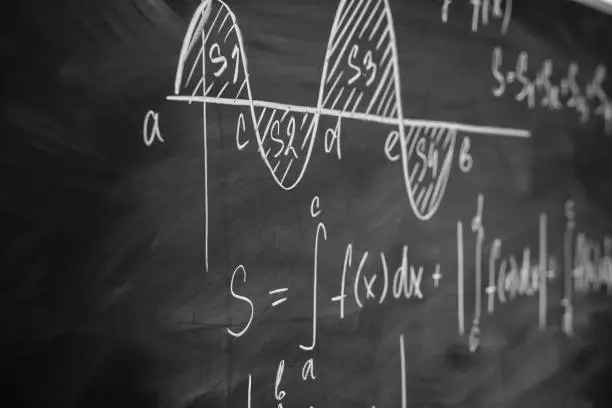
Higher Mathematics: Key Concepts and Applications
- Admin
Higher mathematics involves advanced mathematical concepts that extend beyond basic arithmetic, algebra, and geometry. It covers a broad range of topics that are essential for solving complex problems in fields such as engineering, physics, economics, and computer science. This guide will introduce you to some of the key areas of higher mathematics, including calculus, linear algebra, differential equations, and more, while explaining their practical applications.
Key Areas of Higher Mathematics
Calculus: Calculus is the study of change and motion, and it is divided into two main branches: differential calculus and integral calculus.
Differential Calculus: Focuses on the concept of a derivative, which represents the rate of change of a function. It is widely used to analyze changing systems, such as velocity in physics or profit in economics.
Integral Calculus: Deals with integrals and the accumulation of quantities, such as areas under curves or the total distance traveled by an object.
Applications of Calculus:
In physics, calculus helps model motion, forces, and energy.
In economics, it is used to calculate marginal costs and optimize functions.
In engineering, calculus is essential for analyzing structures, fluid dynamics, and thermodynamics.
Linear Algebra: Linear algebra studies vectors, vector spaces, and linear transformations. It also deals with matrices and systems of linear equations, which are used to represent and solve complex problems in multiple dimensions.
Applications of Linear Algebra:
In computer graphics, linear algebra is used to transform images and model 3D environments.
In machine learning, it is the foundation for algorithms that handle large datasets, such as those used in image recognition or recommendation systems.
In economics and finance, linear algebra helps optimize portfolios and model economic systems.
Differential Equations: Differential equations describe the relationship between a function and its derivatives, allowing us to model real-world phenomena that involve rates of change.
Ordinary Differential Equations (ODEs): These involve functions of one variable and their derivatives. ODEs are used to model processes such as population growth or the motion of a pendulum.
Partial Differential Equations (PDEs): These involve multiple variables and are more complex. PDEs are used in fields like physics and engineering to describe wave propagation, heat flow, and quantum mechanics.
Applications of Differential Equations:
In biology, they are used to model population dynamics and the spread of diseases.
In physics, differential equations describe the motion of particles, electrical circuits, and gravitational fields.
In engineering, they are critical for modeling mechanical systems and control processes.
Probability and Statistics: Probability theory and statistics involve the study of random events and data analysis. Higher-level probability extends to stochastic processes and Markov chains, which model systems that evolve over time with inherent randomness.
Applications of Probability and Statistics:
In data science, statistical models help make sense of large datasets and inform decision-making through predictions and trend analysis.
In finance, probability models are used for risk assessment, stock market analysis, and pricing options.
In engineering, they help model the reliability of systems and optimize manufacturing processes.
Real Analysis and Complex Analysis: Real analysis extends the concepts of calculus to more rigorous levels, focusing on limits, continuity, and convergence within real numbers. Complex analysis deals with functions of complex numbers and is used in advanced engineering and physics.
Applications of Real and Complex Analysis:
In signal processing, complex analysis helps analyze and manipulate signals in communication systems.
In quantum mechanics, both real and complex analysis are critical for solving problems related to wave functions and particle behavior.
Abstract Algebra: Abstract algebra involves the study of algebraic structures like groups, rings, and fields. It is more theoretical and foundational than other branches but has important applications in cryptography, coding theory, and theoretical physics.
Applications of Abstract Algebra:
In cryptography, group theory is used in encryption algorithms, such as RSA, which secures online communications.
In coding theory, algebra helps develop error-correcting codes used in data transmission and storage.
Topology: Topology is the study of the properties of space that remain unchanged under continuous transformations, such as stretching or twisting. It is often referred to as "rubber-sheet geometry."
Applications of Topology:
In computer science, topology helps analyze the structure of networks and the behavior of algorithms.
In robotics, it is used to study motion planning and the configuration space of robots.
In physics, topology plays a role in understanding quantum states and the theory of relativity.
Number Theory: Number theory is the study of integers and the relationships between them. It is a pure mathematical discipline but has important applications in cryptography and computer algorithms.
Applications of Number Theory:
In cryptography, number theory forms the basis for secure communication systems like public-key encryption.
In computer science, it is used in algorithms for data encryption, hashing, and compression.
Practical Applications of Higher Mathematics
Engineering:
Structural Engineering: Higher mathematics is used to model forces, stresses, and the behavior of materials in construction projects, from bridges to skyscrapers.
Electrical Engineering: Complex numbers and differential equations help design circuits, analyze electrical systems, and optimize power grids.
Physics:
Mechanics: Calculus and differential equations are fundamental in understanding the motion of objects and forces acting on them.
Quantum Mechanics: Advanced calculus, linear algebra, and differential equations are used to model the behavior of particles at the atomic and subatomic levels.
Economics and Finance:
Optimization: Calculus is used to maximize profits and minimize costs in economic models.
Risk Management: Probability and statistics are used to evaluate risks and make informed decisions in investment and insurance.
Computer Science:
Algorithms: Many computer algorithms, especially those used in artificial intelligence and data processing, are based on principles from linear algebra, calculus, and number theory.
Machine Learning: Data analysis techniques rely heavily on statistics, probability, and optimization methods derived from higher mathematics.
Biology and Medicine:
Population Modeling: Differential equations help model population growth, disease spread, and ecological systems.
Medical Imaging: Linear algebra and calculus are essential in developing imaging technologies like MRI and CT scans, which rely on mathematical models to reconstruct images.
Conclusion
Higher mathematics provides the foundation for solving complex problems in various fields, from science and engineering to economics and technology. Understanding these advanced mathematical concepts opens doors to innovation, analysis, and optimization in countless applications. Whether you're studying calculus, linear algebra, or probability theory, higher mathematics plays a crucial role in advancing knowledge and driving progress in the modern world.
